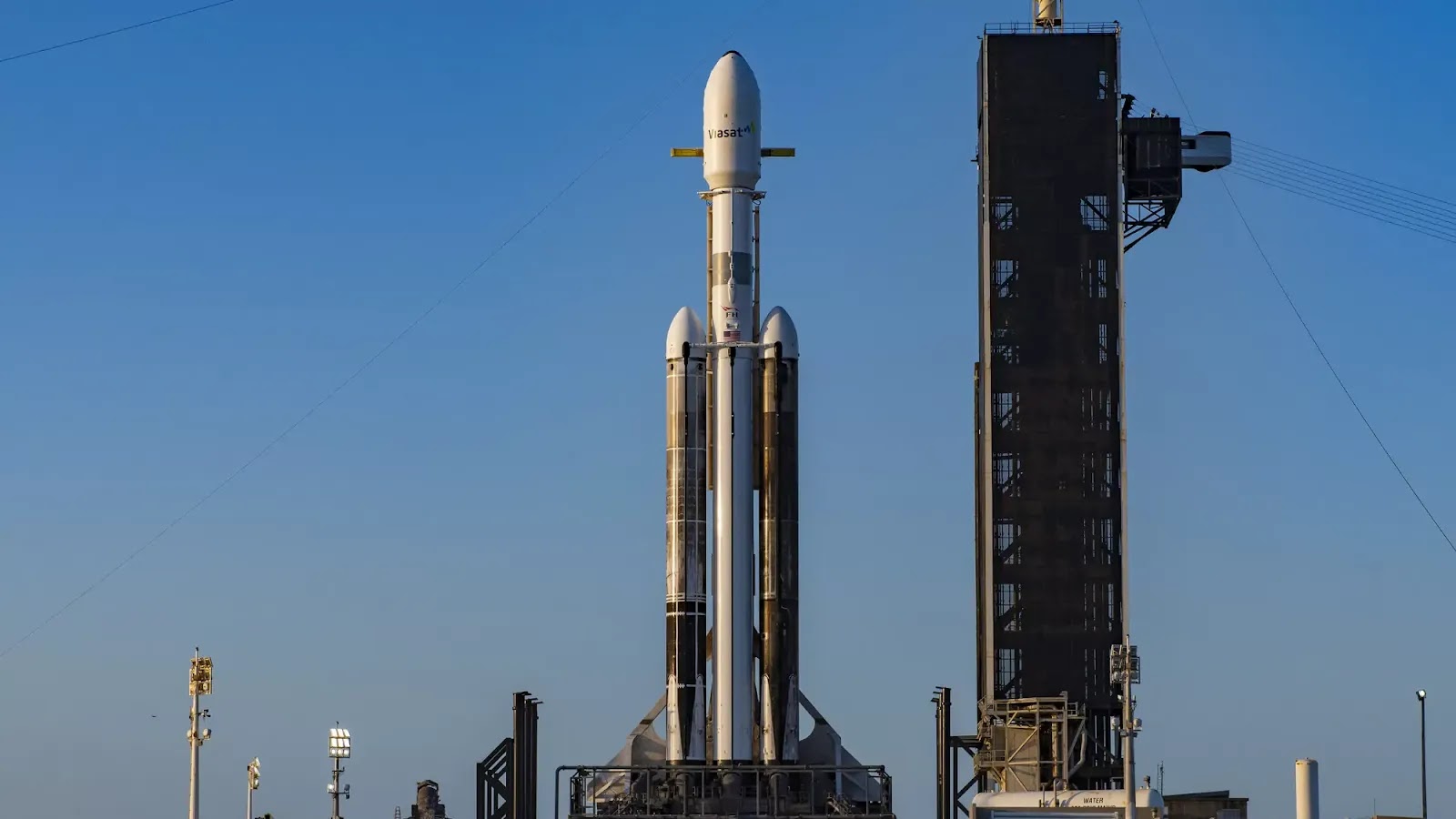On April 27, 2023, SpaceX successfully launched its sixth mission using the Falcon Heavy rocket to deploy the Viasat-3 Americas satellite. The launch took place at Kennedy Space Center in Florida, and the event was witnessed by thousands of people, including space enthusiasts and engineers.
The Viasat-3 Americas satellite is one of three satellites that will be used to provide internet connectivity to consumers worldwide. The satellite will cover North and South America, as well as the Caribbean and parts of the Atlantic Ocean. With a high throughput capacity of more than 1 terabit per second, the Viasat-3 Americas satellite will be one of the fastest internet connectivity providers in the world.
Pre-Launch Activities
Before the launch, SpaceX engineers conducted extensive testing and preparation activities to ensure that the Falcon Heavy rocket and the Viasat-3 Americas satellite were ready for deployment. The rocket consists of three reusable boosters, each containing nine Merlin engines that generate a total of 5 million pounds of thrust.
The Falcon Heavy rocket is designed to carry heavy payloads, and the Viasat-3 Americas satellite is no exception. The satellite weighs approximately 6,400 kg, making it one of the heaviest payloads ever launched by SpaceX.
Also Read:- How to Create a Budget-Friendly Home Gym and Get Fit for Summer
- The Paradoxes of Quantum Physics: Exploring the Unpredictable Nature of Reality
Launch and Deployment
At approximately 4:30 pm Eastern Time, the Falcon Heavy rocket lifted off from Launch Pad 39A at Kennedy Space Center. The launch was streamed live on NASA TV, SpaceX's website, and other space-related media outlets.
After a successful liftoff, the Falcon Heavy rocket ascended through the atmosphere and reached a speed of approximately 8,000 km/h. The rocket's boosters separated from the main core, and each booster landed safely on a landing pad located at Cape Canaveral.
The main core of the rocket continued on its trajectory and eventually deployed the Viasat-3 Americas satellite into orbit. The satellite will use its onboard engines to reach its final orbit and undergo testing before it begins its mission of providing internet connectivity to consumers.
Post-Launch Activities
After the successful deployment of the Viasat-3 Americas satellite, SpaceX engineers will conduct a series of tests to ensure that the satellite is functioning correctly. The satellite's onboard systems will be activated, and engineers will monitor the satellite's performance for several weeks.
Once the satellite has been fully tested and validated, it will be integrated into the Viasat global satellite network. The Viasat-3 Americas satellite is expected to begin providing internet connectivity to consumers in North and South America in the coming months.
The successful launch of the Viasat-3 Americas satellite using the Falcon Heavy rocket is a significant milestone for SpaceX and the space industry as a whole. The launch demonstrates the capabilities of the Falcon Heavy rocket, which is one of the most powerful rockets in operation today.
The Viasat-3 Americas satellite will provide high-speed internet connectivity to consumers in North and South America, as well as the Caribbean and parts of the Atlantic Ocean. The satellite's high throughput capacity will make it one of the fastest internet connectivity providers in the world, and it will be a game-changer for people who rely on the internet for work, education, and entertainment.
Read More:- Inteleon in Tera Raid Battles: Best Counters and Leaks from Pokémon Scarlet and Violet
- Fitbit Luxe on Sale: Spring into Savings with Up to 40% Discounts
That's it for this article.
Thanks for Visiting Us – fixyanet.com



0 Comments